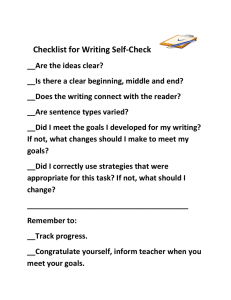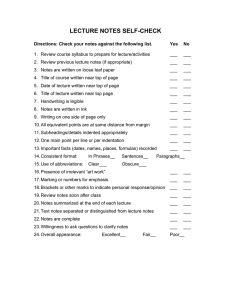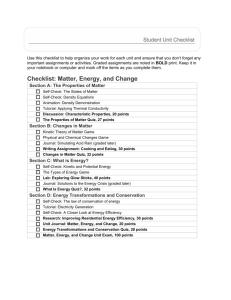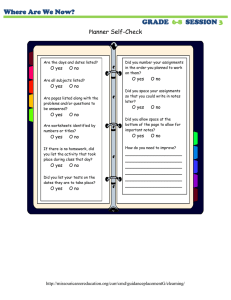Self-Check Style-D Description
advertisement
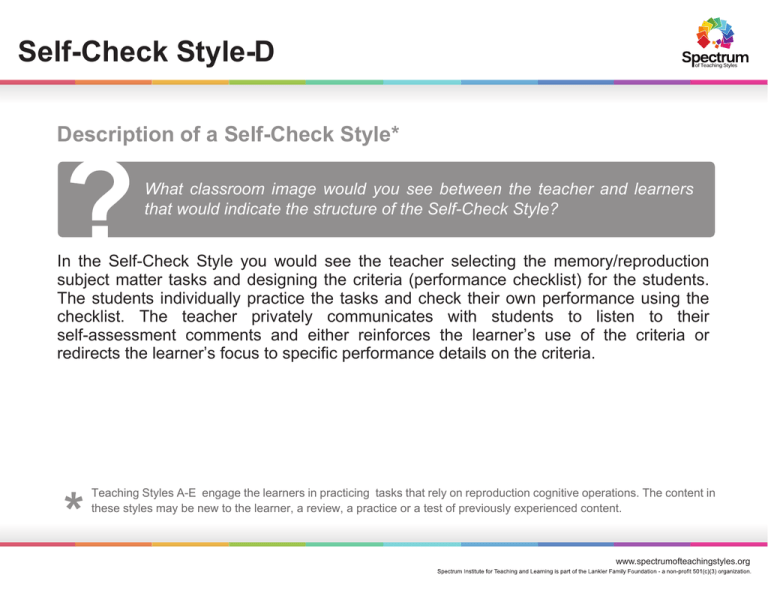
Self-Check Style-D of Teaching Styles Description of a Self-Check Style* What classroom image would you see between the teacher and learners that would indicate the structure of the Self-Check Style? In the Self-Check Style you would see the teacher selecting the memory/reproduction subject matter tasks and designing the criteria (performance checklist) for the students. The students individually practice the tasks and check their own performance using the checklist. The teacher privately communicates with students to listen to their self-assessment comments and either reinforces the learner’s use of the criteria or redirects the learner’s focus to specific performance details on the criteria. Teaching Styles A-E engage the learners in practicing tasks that rely on reproduction cognitive operations. The content in these styles may be new to the learner, a review, a practice or a test of previously experienced content. www.spectrumofteachingstyles.org Self-Check Style-D of Teaching Styles Learning Focus The learning focus of the Self-Check Style is to develop independent practice of a memory/reproduction task and engage in self-assessment that is guided by established criteria. All subject matter has content that is appropriate for the different teaching styles. Physical activities were selected to more visually convey the decision making concept of each style. www.spectrumofteachingstyles.org Self-Check Style-D of Teaching Styles The Anatomy In the anatomy of the Self-Check Style, the role of the teacher (T) is to make all subject matter, criteria, and logistical decisions. The role of the learners (L) is to work independently and to check their own performances against the criteria prepared by the teacher. Pre-Impact (T) Impact (L) Post Impact (L) (planning) (implementation) (feedback and assessment) The arrow represents the decision shift from the Reciprocal Style-C to the Self-Check Style-D. www.spectrumofteachingstyles.org Self-Check Style-D of Teaching Styles Style Summary In the Self-Check Style the teacher’s role is to make all subject matter, criteria, and logistical decisions. The learner’s role is to work independently and to check their own performance against the criteria provided by the teacher. This style is not initially appropriate for the novice who is unfamiliar with and inexperienced in the content. www.spectrumofteachingstyles.org Self-Check Style-D of Teaching Styles Subject Matter Objectives When the Self-Check Style is achieved, the following subject matter objectives are reached: To develop kinesthetic awareness in physical performance by individually practicing and assessing performance To gain independence in performing the task To practice the sequence intrinsic to assessment and feedback skills To be able to correct errors in one's task performance To increase active time-on-task To master the content leading to automatic performance Others www.spectrumofteachingstyles.org Self-Check Style-D of Teaching Styles Behavior Objectives When the Self-Check Style is achieved, the following behavioral objectives are reached: To become less dependent on the teacher or a partner and to begin relying on oneself for feedback and acquisition of content To use criteria to verify one's performance To maintain honesty about one's performance To cope with one's own limitations To gain self-awareness about one's proficiency in performance To develop independence and personal motivation To develop feedback skills to adopt an intrinsic motivation capacity To continue the individualizing process by making the decisions shifted to the learner in the impact and post-impact set To learn social manners Others www.spectrumofteachingstyles.org
